There’s nothing more satisfying than seeing the lightbulb go on. As a teacher of fabric collage, when a student gets it, I experience a rush, a flood of endorphins. And I think students feel the same rush when they realize that they get it.
When I was in Australia recently tutoring for the Australasian Quilt Convention, I asked students in my class to talk about their “lightbulb moments.” My husband Tom interviewed them on Day 3 of the four day class, so by then they’d had time to get deep into the weeds of fabric collage.
What we discovered through these short interviews—but should have come as no surprise—is that students don’t necessarily share the same lightbulb moments and they don’t experience just one lightbulb moment but several over the course of the class.
While the moments Tom recorded were as individual as the students, one theme that emerged was the importance of value: knowing where your darks and lights are in your image and making sure you have fabrics that span that range.
We hope to present more “Lightbulb Moments” in the future, making this a series like my “On the Road” and “Finish Line” posts. If only Tom could accompany on all my trips to be my videographer!
Thanks to my willing and telegenic Aussie students for sharing with us.
Helen King: Values in Fabrics
Helen’s lightbulb moment was when she looked at her fabrics in a new way, not just for their color or pattern but in their values, their lights and darks. Finding the lights and darks to use, sometimes both in the same fabrics, is an important skill that I’m sure will serve Helen well in the future.
Denise Griffiths: Values in Your Reference Image
Denise learned to look at her image in terms of lights and darks. Learning to see in this way is critical to creating images in fabric collage.
Robyn Ellis: Accentuating Values
Push it. Go lighter and darker, whatever colors you are using. Robyn learned to use contrast to create form in her very playful red panda.
Jenny Bowker: Cutting Before You Know Where It Might Go
Jenny temporarily forgot where we were: Melbourne not Canberra. The Collingwood coach she refers to is the coach for the Australian Rules Football League team the Collingwood Magpies. Jenny Bowker is of course a wonderful quilting teacher herself. It was such an honor and pleasure to have her in class. The idea of cutting out a piece of fabric before you know where it goes, such as Jenny mentions I did for her, is a difficult idea to to get across. First you have to teach students to see the contours in the fabric. The more difficult part is actually convincing them to cut into a perfectly good piece of fabric. Maybe it feels wasteful, but it is almost the only way to get started, as Leslie Rumble tells us in the next video.
Leslie Rumble: Precutting into Hand-sized Pieces
Leslie followed my advice and cut her fabrics ahead of time into palm-sized pieces. This helped her to get started, which is often the most challenging stage. If all your fabrics are folded into squares, how can you play with them? Cutting out shapes is a way of creating a palette, like squeezing paint from tubes. It’s hard to paint if your palette is empty. She also mentions finding her image from Joel Sartore. Sartore is a National Geographic photographer whose massive Photo Ark is an attempt to photograph all captive species in zoos around the world, especially those that are in danger of extinction. Several of my past students have gotten permission to use his images as subjects for their collages.
Valerie Merrit: “Drowned in Fabric”
Another stumbling block students encounter when getting started on a fabric collage quilt is having too many choices, as Valerie experienced. Limiting your choices at the beginning is often helpful. You can always add more fabrics back in later.
Judith Edwards: Fabrics that Have “Movement”
Speaking of choosing fabrics… Judith found that plain fabrics weren’t as useful as fabrics with bold patterns or “movement” as she puts it. Even though her fabrics were limited to blacks and whites and shades of grays she saw in her dog, she still needed to have fabrics that had variation of tone and shape to them.
Jenny Breeze: The Messy-Scary Stage Passes
Once you do get started, there’s a difficult stage to overcome. Jenny’s caboodle-dog collage passed—as they all do—through the messy-scary stage. Telling my students it gets worse before it gets better may not sound as encouraging as it turns out to be. It’s a relief to most of them that it’s something we all experience and we have to just keep on plugging away to get through it.
Lynda Peters: Working Top-Down, Bottom-Up
I’ve said that fabric collage is like painting with fabric, but the analogy fails in terms of how you actually work. In painting it makes most sense to build up from the background. After all you can’t paint underneath the foreground image. I teach my students to start their image with whatever is most forward in the picture, which Lynda quickly caught on to after her initial surprise. This way of working keeps as much of your drawn design exposed as possible and thus usable during the process. Unlike paint, you can lift up the edges of your fabrics and place more fabric behind them.
Annie Radomski: A New Angle on Apliqué Scissors
Sometimes it’s the little things that make a huge difference. In Annie’s case it was showing her how I use the pelican-bladed appliqué scissors I prefer. In order to slip under the edges of fabrics to trim them to the drawing underneath, I use the narrow blade, as Annie demonstrates above.
Eileen McNeilly: Connecting with Character
Often creating an image in fabric collage isn’t as simple as recreating the picture that you’ve chosen as realistically as possible. It helps to have a principle or idea to guide our decisions, especially when the choices are nearly infinite. Eileen followed my advice to connect the with character of her subject. Once she had done that it became clear to her how to proceed.
That’s it for the first ever Lightbulb Moments blog post! Do you have any lightbulb moments you’d like to share? Post them in the comments below.
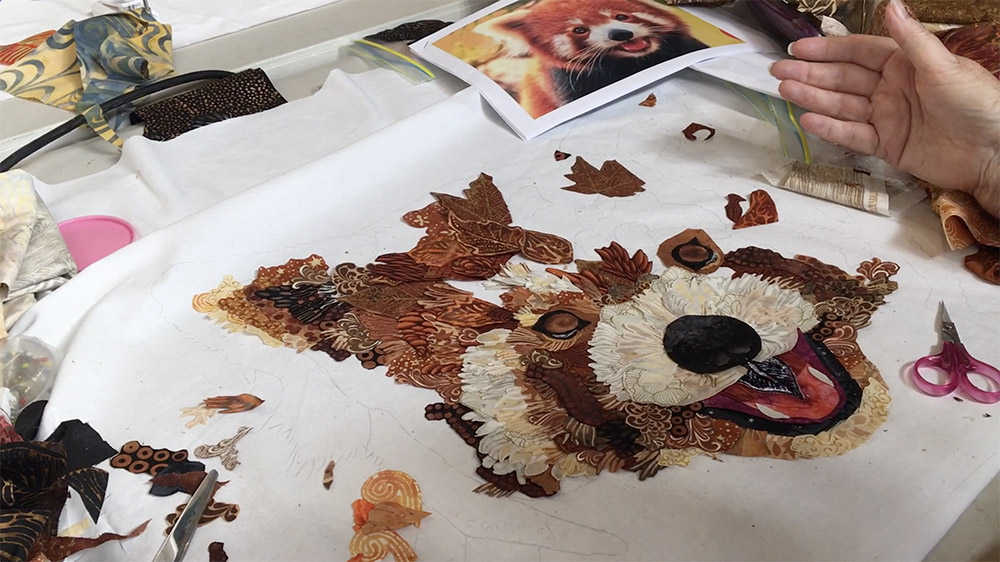
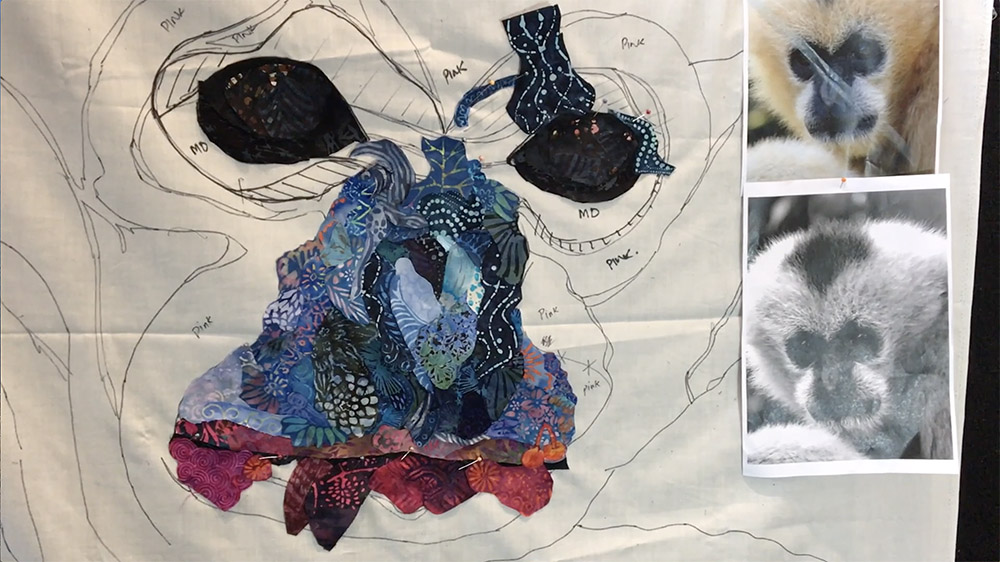
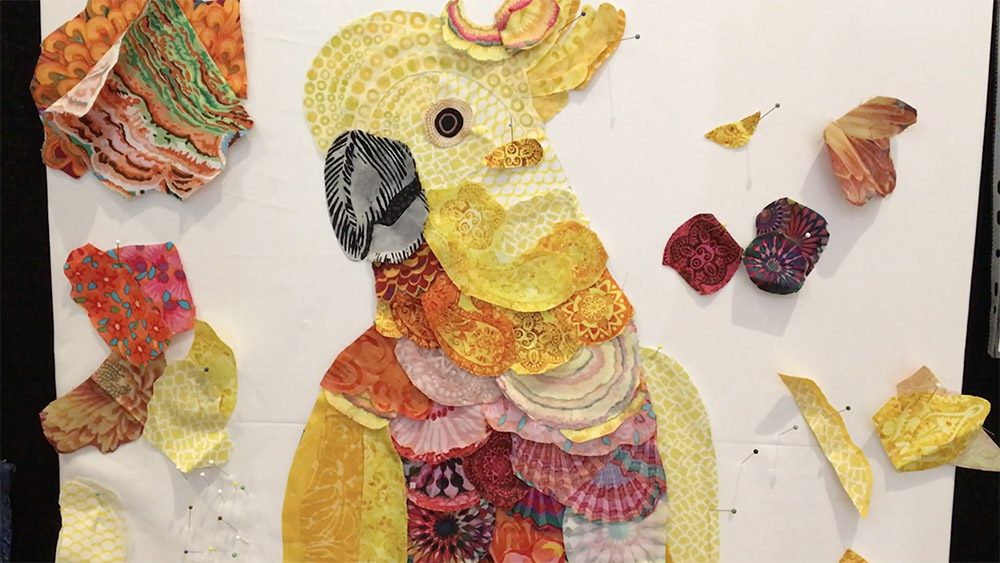
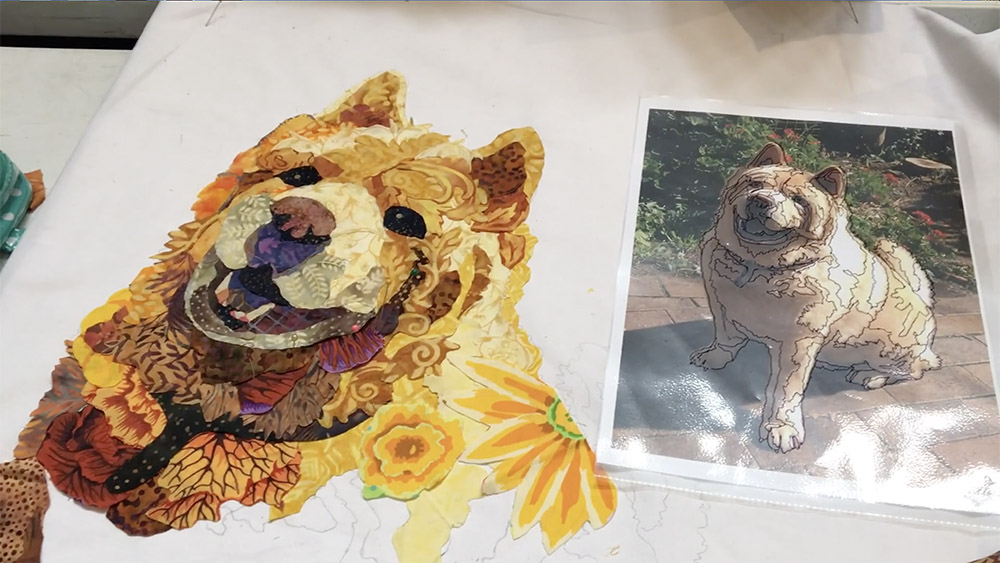
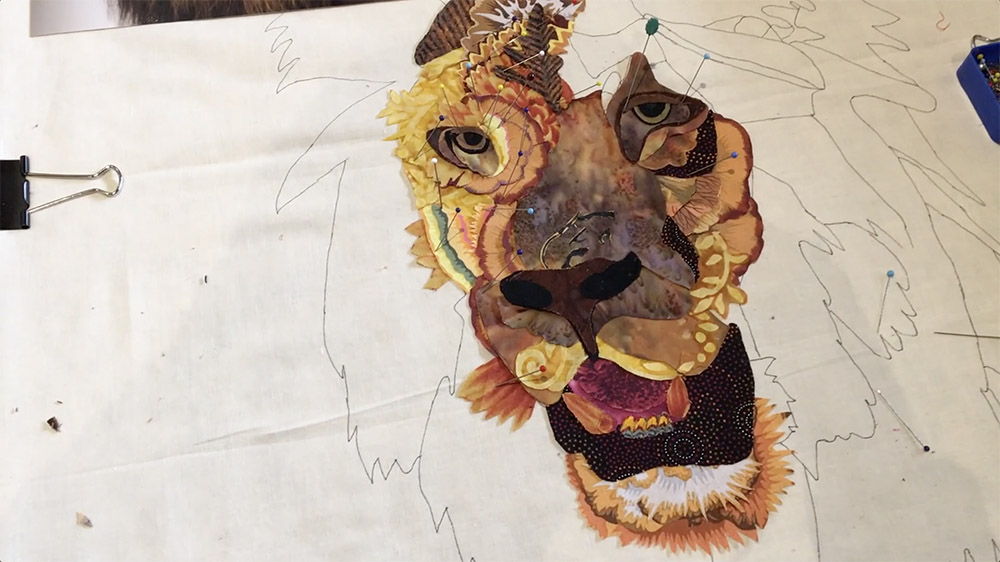
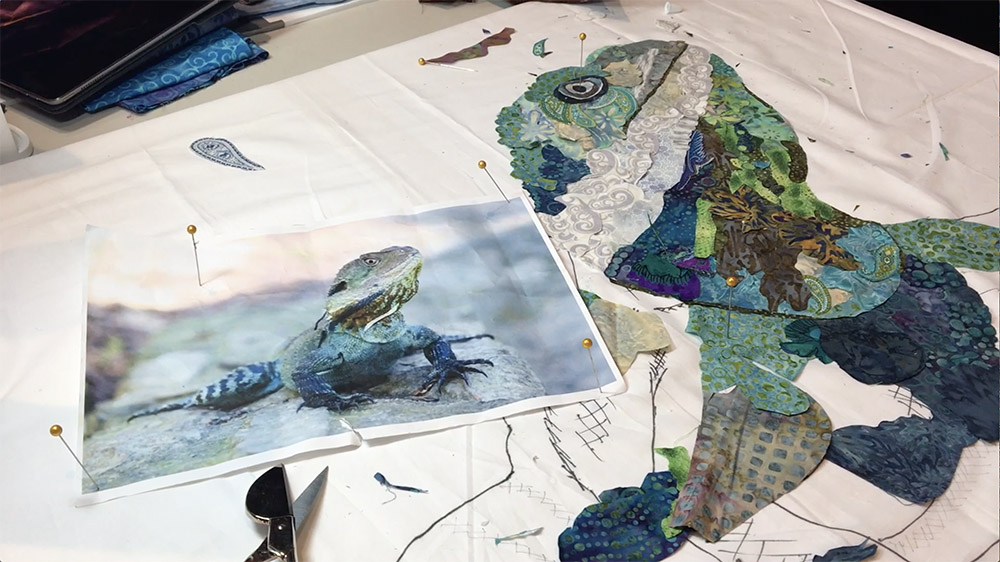
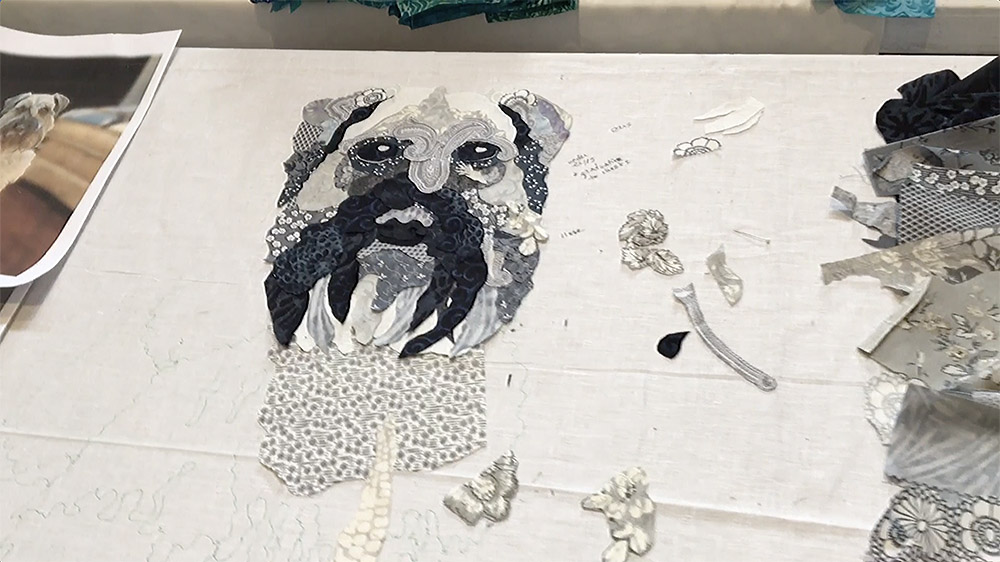
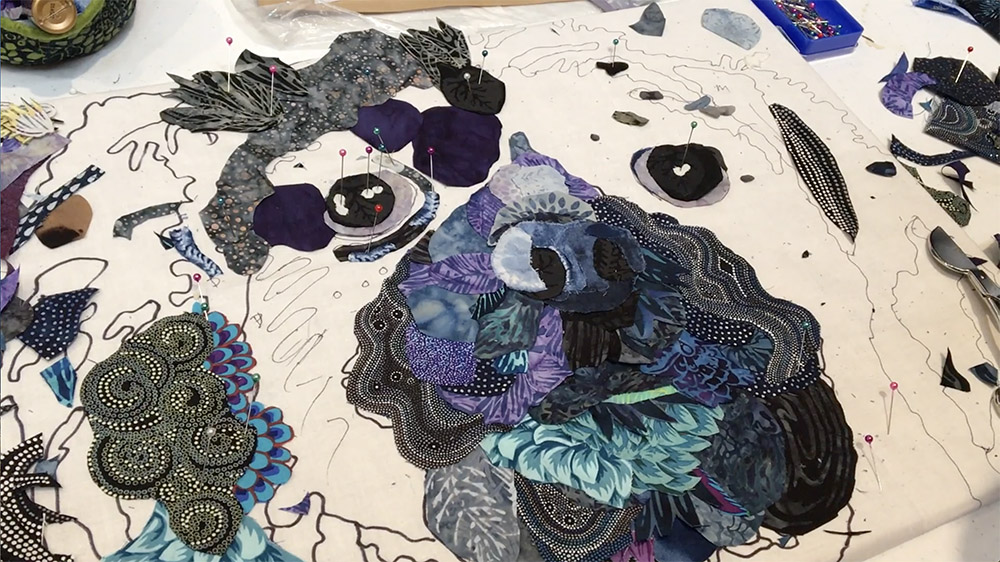
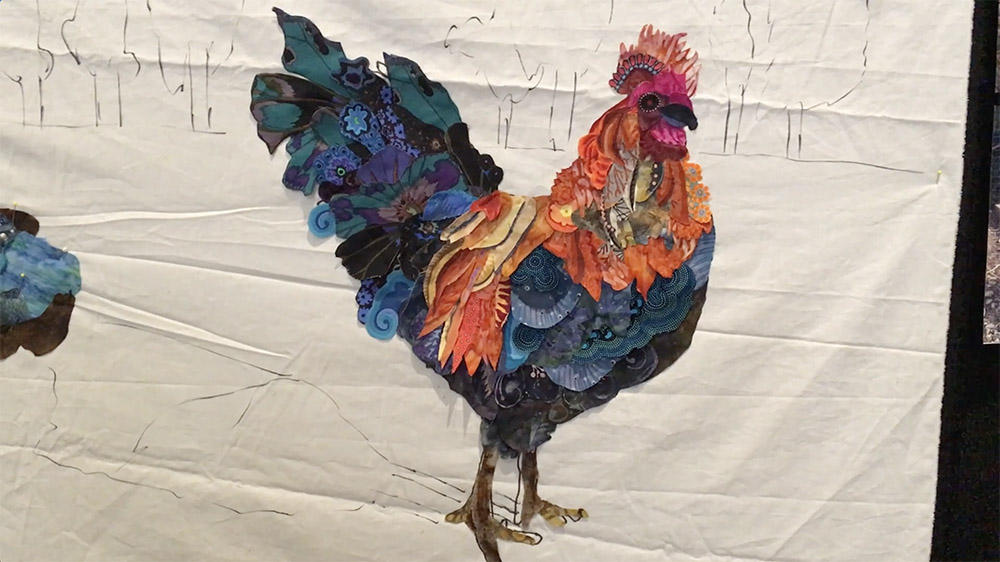
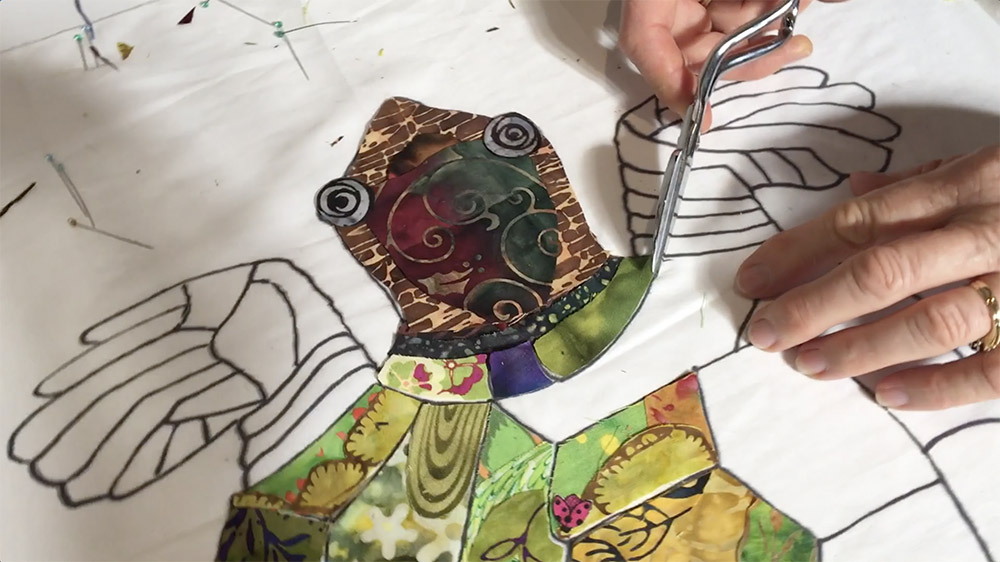
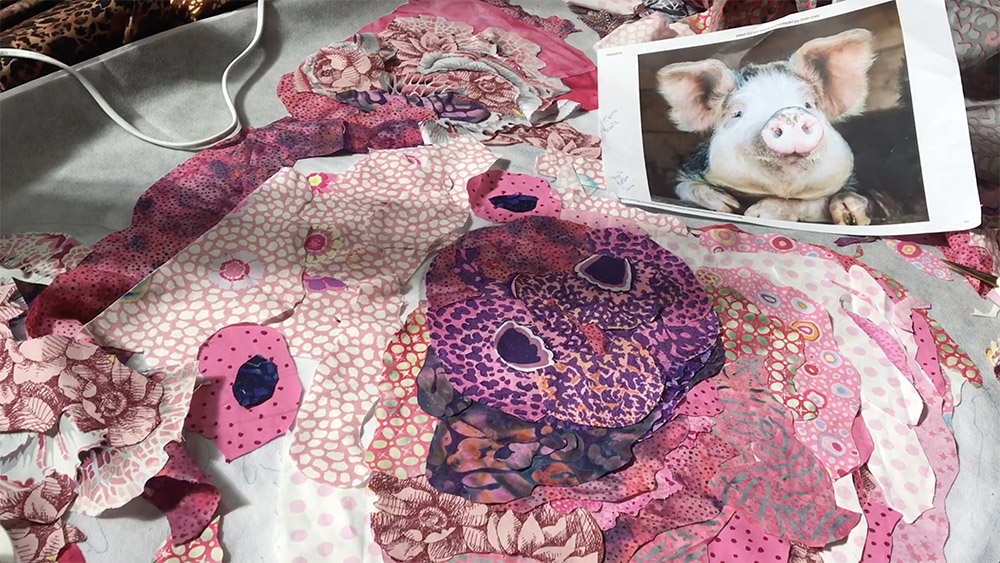
Thanks Susan and Tom for the interviews…I even enjoyed my interview!
So inspiring to listen to these very creative students in your latest Australian workshop. Exceptional work ladies! Gee, if only I’d realised well before March this year that I would love the collage process. I do hope I have the opportunity of being one of your students one day if you happen to return in the future. Lyn, Bega NSW
I have not started yet- only at the stage of reading your blogs – but I think you are saying get started – and if you put something down (with a pin) if you feel later it is wrong or you find something better – you can change it – – just get started.
I love these collages work
I’m currently finishing my first collage and I find I identify with many of these comments, especially seeing the values and the lines. Wishing I had seen this before I started because the comments reflect a strong influence from Susan. Here’s to my next project. Thank you so much for sharing this!!!
My lightbulb moment came from reading Susan’s books, as I live in California and haven’t had the pleasure to attend one of her workshops: Don’t be afraid! Practice the process to make progress. Jump in!
Lots of great tips! I think I have seen or read many of these on your blog but this is great review and reinforcing all in one spot.
I really enjoyed reading the Light Bulb Moment post, which of course made me think of how I would answer the question. I agree that starting with the “essence” of the piece–what makes me relate to it on a personal level–would be mine. When I worked on my cat in Susan’s class, I started with what I was the most concerned about–the eyes. Once I got her eyes, she became real to me and it’s almost like she inspired me along the way.
I so enjoy these blogs. Great information! I took Susan’s class in Sept 2018 in Madeline Island, WI. I truly enjoyed it and look forward to another. I am just finishing my quilt to enter into the June 2019 Quilt Show. So excited!
Thank u Susan!
Thank you for sharing these light bulb moments. They give me inspiration to move forward in this process of collage.
My light bulb moment was Susan’s advice to cut lots of palm-sized pieces of fabric before starting to lay them out. For me, it means to let the fabric tell you where it wants to go instead of forcing it into the collage.
Barb in Ottawa
P.S. Yes, fabric talks to me! LOL!